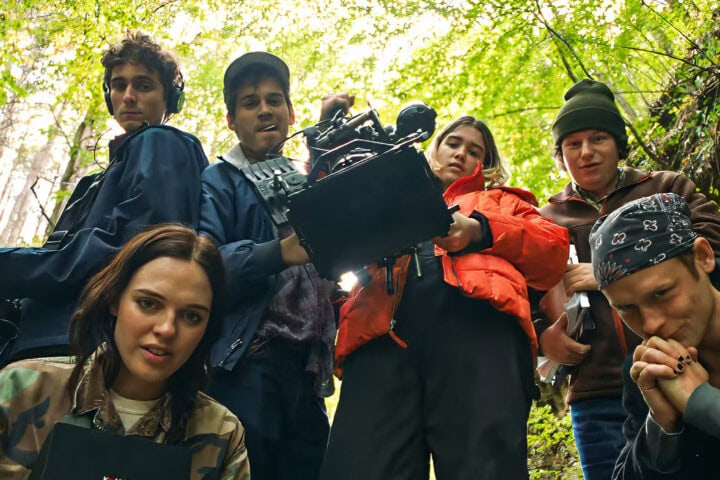In his documentaries S21: The Khmer Rouge Killing Machine and The Missing Picture, Rithy Panh investigates the traumatic legacies of the Cambodian genocide through recreation. In the former, Panh had Khmer Rouge guards who willfully practiced torture act out their violence at the very site of their deeds, while in the latter he used clay figurines to dramatize the Khmer Rouge’s atrocities and reflect on robbed innocence.
In The Mother of All Lies, Asmae El Moudir similarly attempts to recollect a national tragedy that was never fully documented: the Casablanca Bread Riots of 1981, an uprising in which the Moroccan police brutalized and murdered over a purported 600 civilians who were protesting food cost inflation. With the help of her formerly estranged father, El Moudir built a miniature replica of her family’s shanty town, “to free our memories and their words” and to “create a place for those who are afraid to talk—a place where things that don’t exist can come to life.”
It’s a cinematic process that psychotherapist and Panh scholar Deirdre Boyle might also call a “parajuridical” one. Real-life perpetrators and victims stare down their traumatic histories in a “formal theater of adjudication,” in which reenactment and reproduction leads to catharsis, of a kind that El Moudir hopes to grant to the members of her childhood community.
El Moudir’s examination of the Bread Riots is intensely personal. Zahra, her tyrannical grandmother, has declared that all photographs and recollections of the past are sins. To that end, Zahra made sure that all photographs from her granddaughter’s childhood be burned—a strict religious decision that happens to mirror the Moroccan government’s crackdown on photographic evidence of its crimes. Only one photograph from the day of the Bread Riots is known to exist, a black-and-white picture of corpses rotting in the sun.
To understand why Zahra has held so steadfastly to silence, and why she insists on keeping quiet about the truth behind the death of Fatima, a 16-year-old family friend, El Moudir persists in asking questions long thought to be taboo. As if telling us dangerous secrets that may implicate us, too, she speaks a whispered narration that tracks her somewhat typical childhood and the mystery of its scant physical record. She speaks of the still image as one might an illicit drug.
The miniature recreation of El Moudir’s town, and the studio space in which it’s been created, becomes something of an immersive theater space in which her father, Mohammed, and two of her neighbors, Abdallah and Said, express the burden of their physical and emotional scars through handmade figurines. In the documentary’s most harrowing scene, Said acts out how he and others were rounded up and put into a tightly enclosed, windowless clay prison, and how the conditions were so bad that he begged a guard for death.
Through her use of recreation, El Moudir suggests that the act of documentary filmmaking can turn historical truths into fiction, in which everyone becomes an active participant. This is seen most interestingly in El Moudir’s grandmother. While Zahra protests the very act of remembrance, she cannot help but become an even more exacting set decorator than her granddaughter, insisting that her likeness and that of some houses has been done wrong.
The film’s opening scene finds Asmae tuning Zahra’s hearing aid in the same manner that a boom operator might do a sound check, turning her grandmother into an unwilling actor. The white lie of Asmae being told she’s the subject of a rare photograph raises new questions: Who has been cast in these historical roles? Who gets to relay the stories of these crimes? Asmae even includes a stunningly layered scene in which all of her family members watch back a previous testimonial on a large projector, like directors and producers themselves watching the dailies.
All of this casting and recasting of roles shifts El Moudir and her family members from inactive to active participants and back again, raising ethical questions about the nature of documentary filmmaking. For El Moudir, she wonders if she’s just trying to find out what happened in her town in 1981, or if she’s crafting that history herself, and, if so, are these still memories if they’re recreated and told by people who were never really there? There may be no definitive answer to these and other related questions, a realization that El Moudir, and we, must eventually accept.
Since 2001, we've brought you uncompromising, candid takes on the world of film, music, television, video games, theater, and more. Independently owned and operated publications like Slant have been hit hard in recent years, but we’re committed to keeping our content free and accessible—meaning no paywalls or fees.
If you like what we do, please consider subscribing to our Patreon or making a donation.



